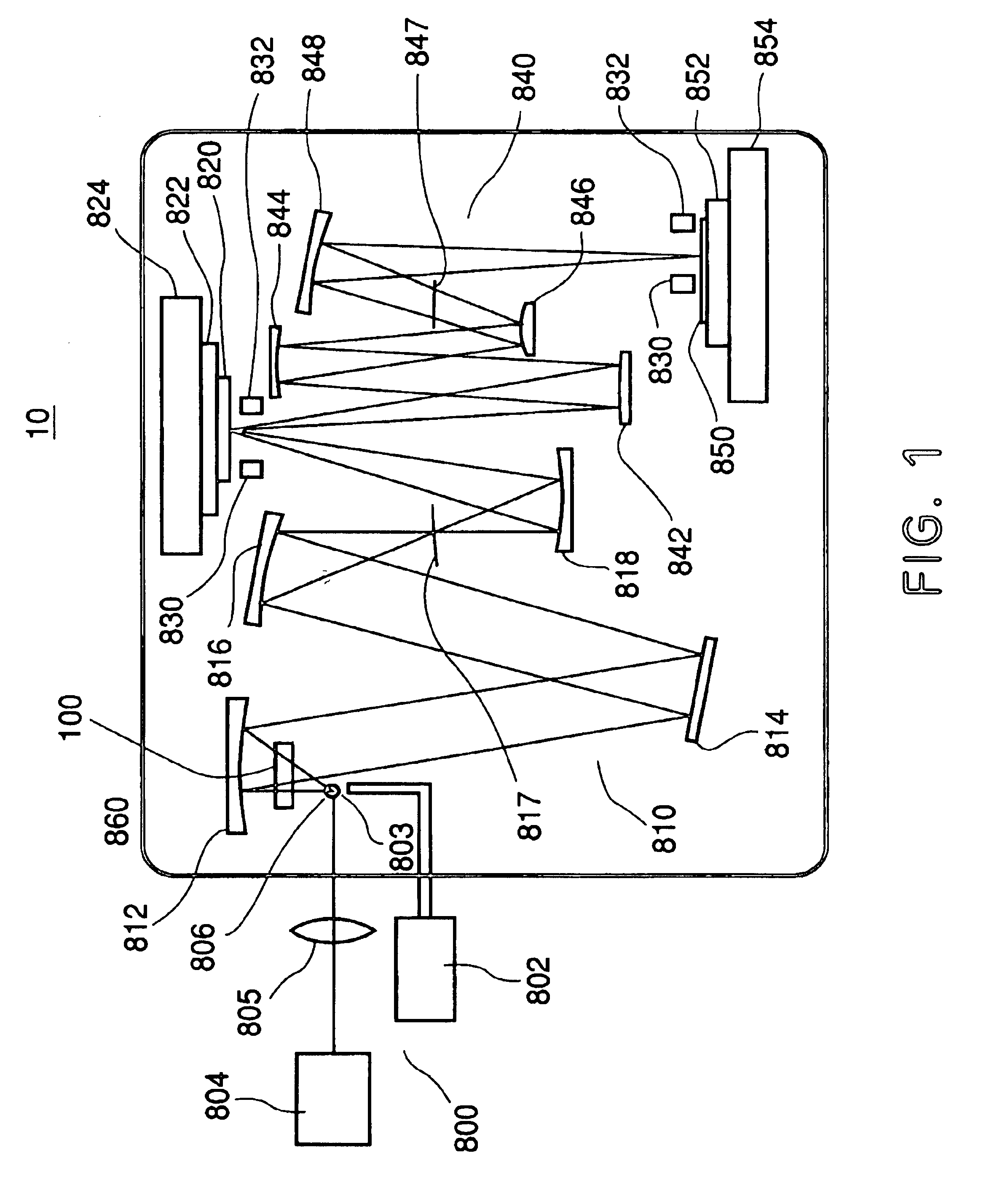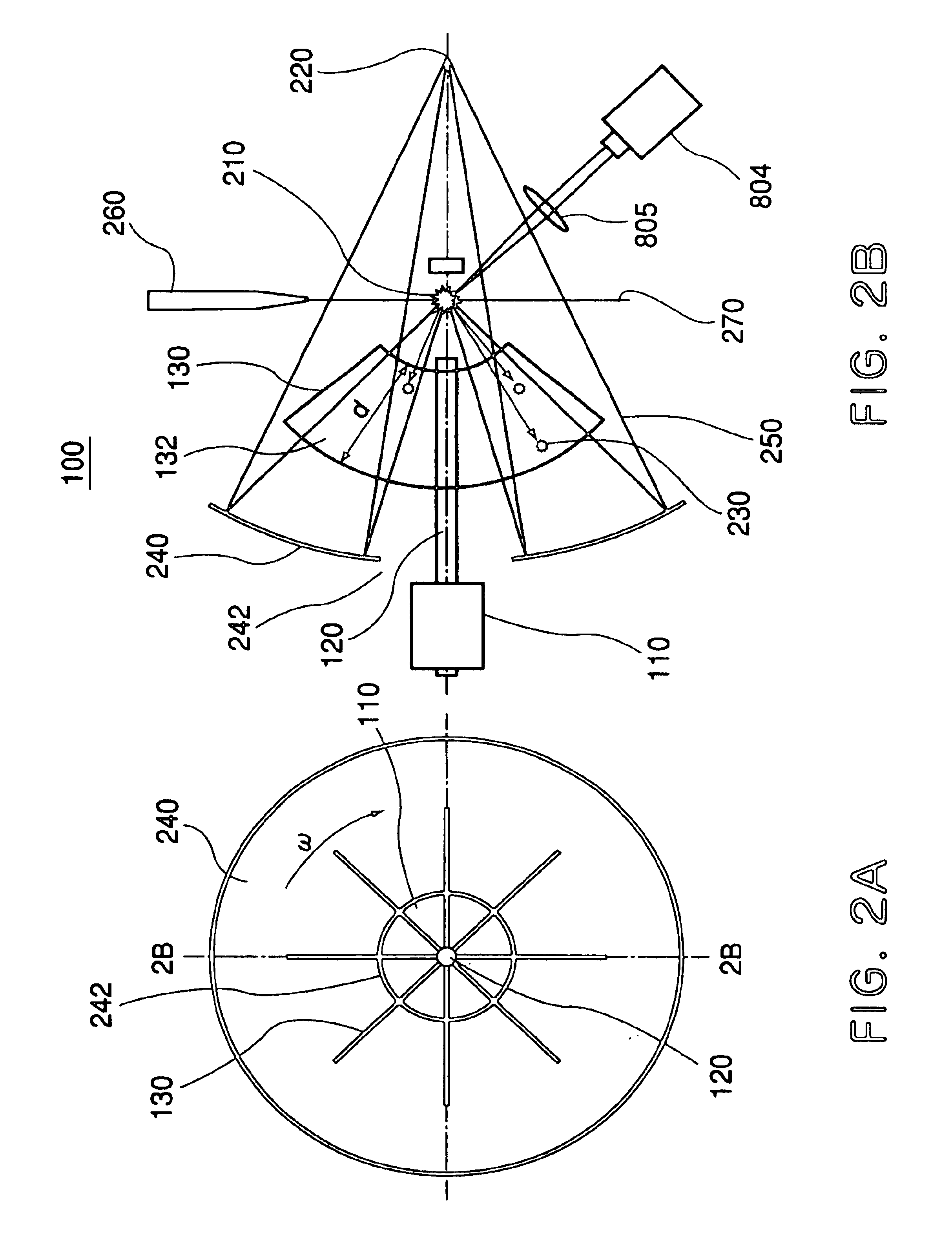Debris removing system for use in X-ray light source
a technology debris removal system, which is applied in the field of x-ray light source, can solve the problems of reducing the scattering particles, and reducing the efficiency of lithography using ultraviolet light, and achieves the effect of superior debris removal and good utilization efficiency of euv ligh
- Summary
- Abstract
- Description
- Claims
- Application Information
AI Technical Summary
Benefits of technology
Problems solved by technology
Method used
Image
Examples
Embodiment Construction
Referring now to the drawings, an exposure apparatus 10, which uses a debris removing system 100 according to an embodiment of the present invention, will now be described. In the drawings, the same reference numerals denote corresponding elements.
FIG. 1 is a schematic view of the exposure apparatus 10. The exposure apparatus 10 is an X-ray projection exposure apparatus in which step-and-scan exposure is to be carried out by use of EUV light (for example, having a wavelength of 13.4 nm) as exposure light.
As shown in FIG. 1, the exposure apparatus 10 comprises an EUV light source 800, a debris removing system 100, an illumination optical system 810, a reflection type reticle (reflection type mask) 820, an alignment optical system 830, a projection optical system 840, a reticle stage 824, and a wafer stage 854. The components from the debris removing system to the wafer stage 854 are accommodated in a vacuum container 860.
The EUV light source 800 of this embodiment uses laser plasma, ...
PUM
 Login to View More
Login to View More Abstract
Description
Claims
Application Information
 Login to View More
Login to View More - R&D
- Intellectual Property
- Life Sciences
- Materials
- Tech Scout
- Unparalleled Data Quality
- Higher Quality Content
- 60% Fewer Hallucinations
Browse by: Latest US Patents, China's latest patents, Technical Efficacy Thesaurus, Application Domain, Technology Topic, Popular Technical Reports.
© 2025 PatSnap. All rights reserved.Legal|Privacy policy|Modern Slavery Act Transparency Statement|Sitemap|About US| Contact US: help@patsnap.com



